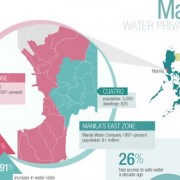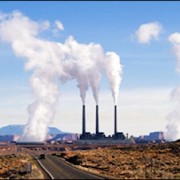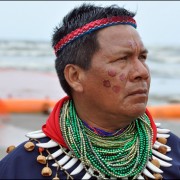Map and Statistics – Divining Destiny: Water Challenges in Mexico’s Tehuacán Valley
“A Place of Stones” – About Mexico’s Tehuacán Valley
Tehuacán, meaning ‘Place of Stones’ in the native language of Nahuatl, is a centuries old city that lies in the Mexican state of Puebla, roughly 150 miles southeast of Mexico City. As much as 9,000 years ago nomadic people settled in the valley of Tehuacán, due in large part to the fertile soil and abundant supply of water. Around 4000 BC, the people of Tehuacán began cultivating many staple crops and, according to Paleo-botanist Richard Mcneish, were the very first to cultivate corn (maize).
This wide, cactus covered valley is bordered to the west by the mountains of the Sierra de Zapotitlán and to the east by the Sierra Negra. In contrast to many other regions of Mexico, the climate of the Tehuacán valley is semiarid. Scott Whiteford in his book entitled The Keepers of Water and Earth, writes that creative methods of water collection, as a result, have been devised to keep up with agricultural demands. In this climate, ‘where evapotranspiration exceeds precipitation throughout the entire year and the rainfall is limited and unpredictable, agriculture has to be supported by irrigation.’ As a result a complex system of canals and reservoirs have been created over thousands of years to provide sufficient water for year-round irrigation and to define borders between individual properties.
Some of the irrigation water, Whiteford explains, has come from springs, known as manantiales, which flow out to the valley floor. The second source of irrigation water comes from a series of streams, called barrancas, which come to life after a rain. Gene Wilken, a resource management surveyor, concludes that the Tehuacán valley has ‘undoubtedly the most extensive and complex runoff management system in Middle America.’
The third and most important source of water comes from underground tunnels known as galerias filtrantes, which use gravity to guide water from higher elevations to the valley floor. The fourth and most controversial source of water comes from deep wells, called pozos profundos, have been created through modern technology. They are extremely expensive and beyond the means of most farmers. There is great concern, too, that these wells will lower the water table and render many of the galerias less productive.
Though the Tehuacán valley supports numerous types of commerce, agriculture still dominates the economy. Much of the agriculture still utilizes centuries old techniques, but over the last four decades the number of large and sophisticated agribusinesses specializing in raising vast numbers of chickens, pigs, cattle and other produce, has increased substantially. These businesses, not surprisingly, have put further stress on the underground water reserves.
Additionally, high quality mineral springs have been tapped for decades for large scale bottling. These mineral springs are so well known that people throughout Mexico still ask for a ‘Tehuacán’ when ordering a bottle of water. There are those who believe, too, that these waters possess curative qualities.
In the nineties, hundreds of Maquiladoras, or textile factories, were created principally for the manufacture of blue Jeans for the world market. At its height, according to Mart’n Amaru Barrios Hernández, a member of the Comision de Derechos Humanos y Laborales del Valle de Tehuacán, the city and surrounding areas were home to over 700 maquiladoras, which together, created an environmental nightmare. Each factory required huge amounts of underground water, dyes and chemicals to treat these jeans. Though many of these factories have since closed and moved to other countries where labor and taxes are even cheaper, the water that passes though parts of the town has a bluish tint and is full of chemicals such as potassium used for ‘stone-washing’ the jeans. Combined with deforestation and overgrazing, today Tehuacán is one of the driest regions of Mexico.
Circle of Blue provides relevant, reliable, and actionable on-the-ground information about the world’s resource crises.











Leave a Reply
Want to join the discussion?Feel free to contribute!